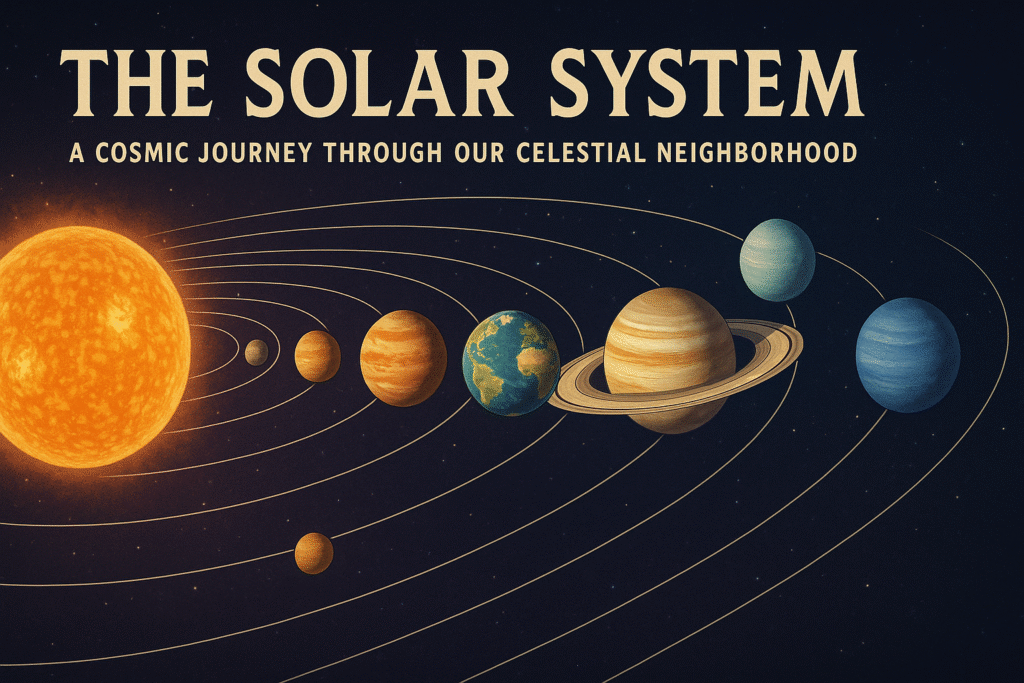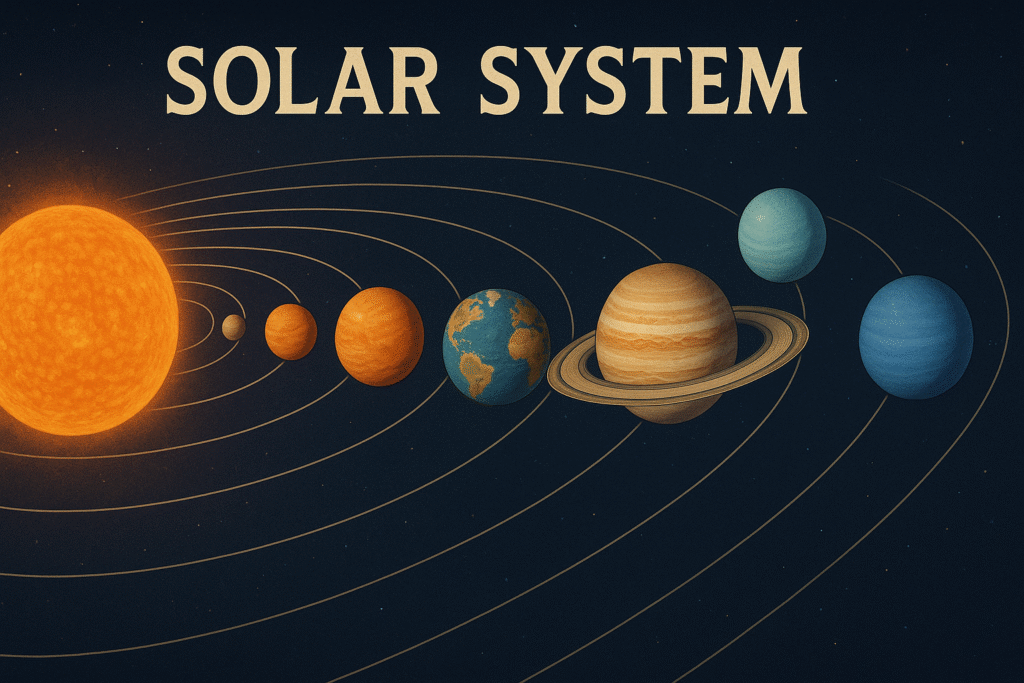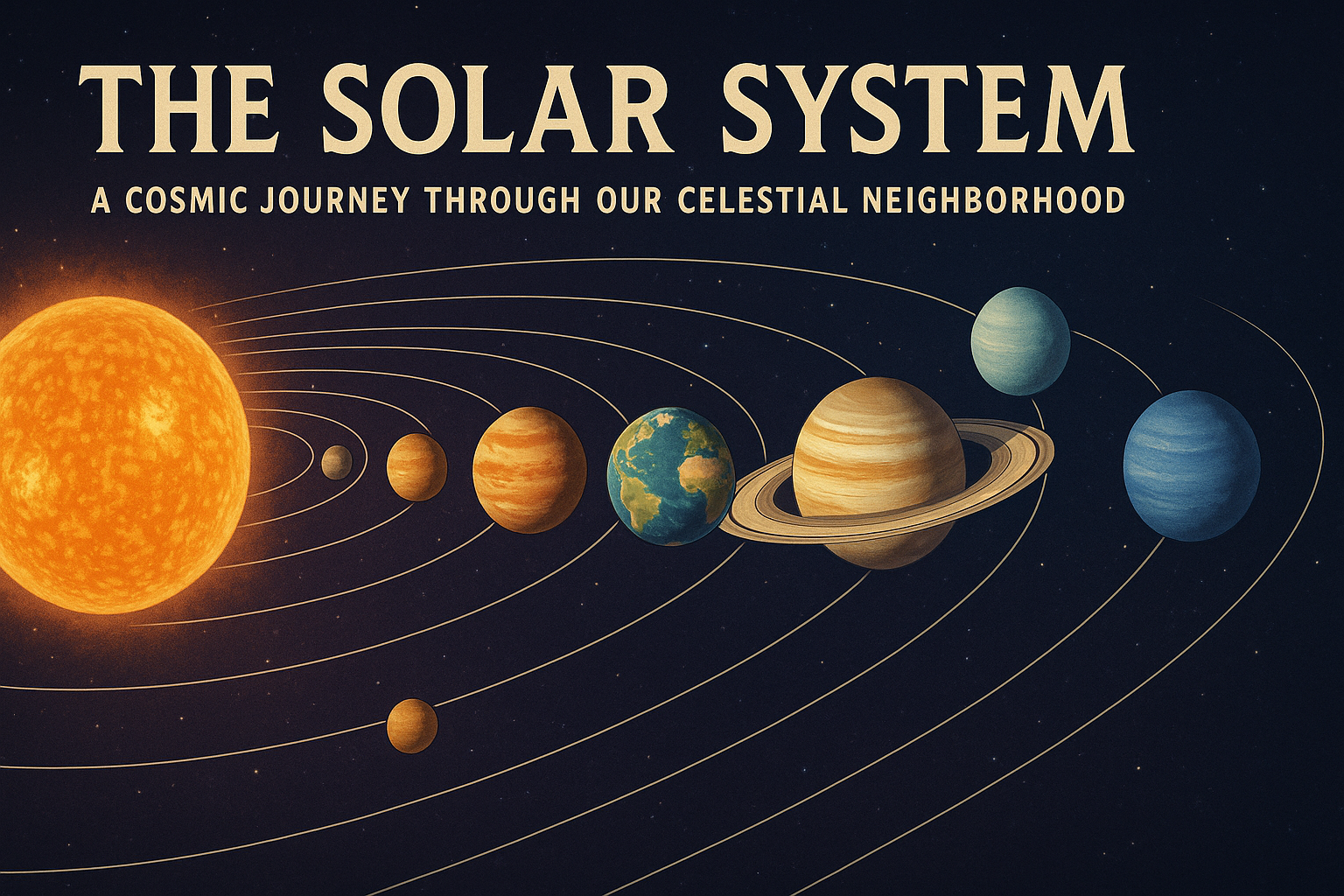The Solar System, our cosmic home, is a fascinating and complex region of space that captivates scientists, astronomers, and curious minds alike. Spanning a vast expanse, it consists of the Sun, eight planets, their moons, and a myriad of smaller celestial bodies like asteroids, comets, and dwarf planets.

The Sun: The Heart of the Solar System
At the center of the Solar System lies the Sun, a massive, glowing star that accounts for 99.86% of the system’s total mass. This G-type main-sequence star, roughly 4.6 billion years old, powers life on Earth through photosynthesis and drives the climates of the planets.
The Sun’s gravitational pull keeps all celestial bodies in orbit, maintaining the delicate balance of the Solar System. Its energy, generated through nuclear fusion, converts hydrogen into helium, releasing tremendous amounts of light and heat that sustain our planet and influence others.
The Eight Planets: A Diverse Family
The Solar System is home to eight planets, divided into two categories: the inner terrestrial planets and the outer gas giants.
Terrestrial Planets
The inner planets—Mercury, Venus, Earth, and Mars—are rocky, with solid surfaces and metallic cores.
- Mercury: The smallest planet and closest to the Sun, Mercury endures extreme temperatures, ranging from scorching days to freezing nights due to its thin atmosphere.
- Venus: Often called Earth’s “sister planet” due to its similar size, Venus is a hellish world with a thick, toxic atmosphere and surface temperatures hot enough to melt lead.
- Earth: The only known planet to support life, Earth boasts a unique combination of liquid water, a breathable atmosphere, and a stable climate.
- Mars: The Red Planet, known for its iron-rich dust, has evidence of ancient water flows and is a prime target for exploration in the search for past microbial life.

Gas Giants and Ice Giants
The outer planets—Jupiter, Saturn, Uranus, and Neptune—are massive worlds with gaseous compositions and icy features.
- Jupiter: The largest planet, Jupiter is a gas giant with a turbulent atmosphere featuring the Great Red Spot, a storm larger than Earth. It has over 79 moons, including Ganymede, the largest moon in the Solar System.
- Saturn: Famous for its stunning ring system, Saturn is a gas giant with over 80 moons. Its rings, made of ice and rock, are a breathtaking feature visible through telescopes.
- Uranus: An ice giant with a pale blue hue due to methane in its atmosphere, Uranus rotates on its side, a unique trait among the planets.
- Neptune: Another ice giant, Neptune is known for its vivid blue color and strong winds, the fastest in the Solar System.
Dwarf Planets and Other Celestial Bodies
Beyond the eight planets, the Solar System includes dwarf planets like Pluto, Eris, Haumea, Makemake, and Ceres. These bodies share characteristics with planets but do not clear their orbits of other debris. Pluto, once considered the ninth planet, was reclassified in 2006 by the International Astronomical Union.
The Solar System also contains the asteroid belt, located between Mars and Jupiter, which houses millions of rocky fragments. The Kuiper Belt and Oort Cloud, far beyond Neptune, are home to icy bodies and comets, some of which occasionally visit the inner Solar System, leaving spectacular trails visible from Earth.
The Formation and Evolution of the Solar System
The Solar System formed about 4.6 billion years ago from a giant molecular cloud of gas and dust. A supernova explosion likely triggered the cloud’s collapse, forming a spinning disk with the Sun at its center. Over time, particles in the disk clumped together, forming planetesimals that eventually grew into planets, moons, and other bodies. This process, known as accretion, shaped the diverse worlds we observe today.
The Solar System continues to evolve. Planets migrate slightly, asteroids collide, and comets deliver materials across vast distances. Scientists study these processes to understand not only our system but also the formation of exoplanets around other stars.
Exploration and Scientific Discoveries
Humanity’s understanding of the Solar System has grown through centuries of observation and modern space exploration. Telescopes like Hubble and ground-based observatories have provided stunning images and data. Space missions, such as NASA’s Voyager, Cassini, and Perseverance rover, have revealed intricate details about distant planets, moons, and asteroids.
For instance, the discovery of water ice on Mars and potential subsurface oceans on Jupiter’s moon Europa and Saturn’s moon Enceladus has fueled speculation about the possibility of life elsewhere in the Solar System. Upcoming missions, like the Europa Clipper and Dragonfly to Titan, aim to further unravel these mysteries.
Why the Solar System Matters
Studying the Solar System offers insights into Earth’s place in the universe and the conditions necessary for life. It also informs our understanding of planetary systems around other stars, aiding the search for habitable exoplanets. Additionally, resources like water ice and minerals on asteroids could support future space exploration and colonization efforts.
Conclusion
The Solar System is a dynamic and awe-inspiring region of space, offering endless opportunities for discovery. From the Sun’s radiant energy to the icy reaches of the Oort Cloud, each component tells a story of cosmic evolution. By continuing to explore and study our celestial neighborhood, we deepen our understanding of the universe and our role within it.
